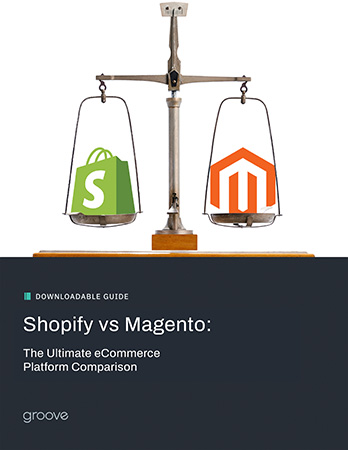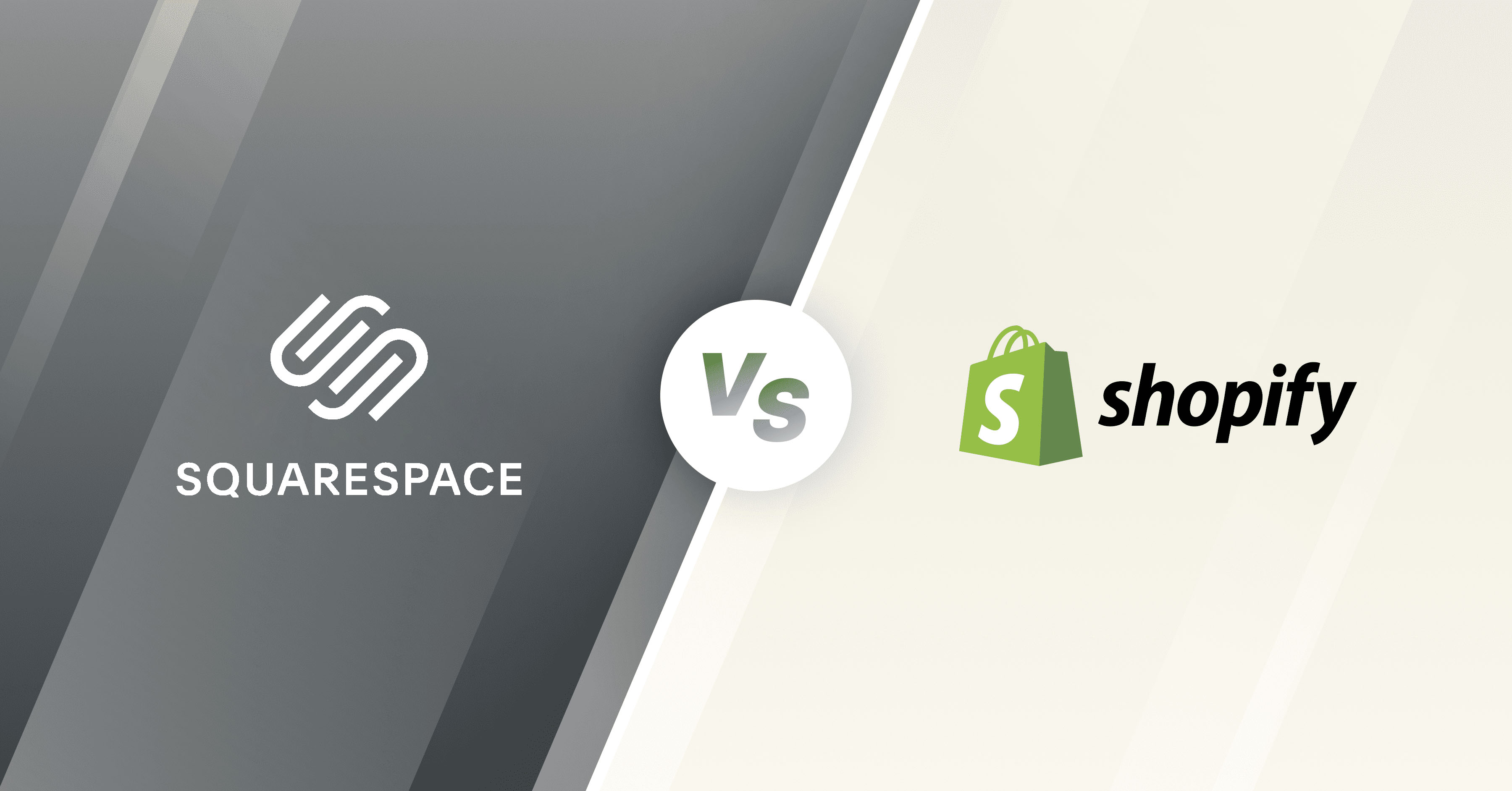Shopify and Squarespace are both popular and feature-rich tools for creating websites. The primary difference between the two services is what they were originally designed to accomplish - and what that means for each service offering today. Read on to learn which website creation and management tool is right for your needs when comparing Shopify vs Squarespace for eCommerce.
The History of The Internet
The internet that we all know and use in our daily lives was not always the easy-to-use network it is today. The internet existed for governments and technology enthusiasts for decades before the average person could afford a dial-up connection in their home.
Originally, the concept of a website did not exist as we know it today. Users of the internet were able to access files across computers that were linked via a hardwired connection. This technology gave way to the idea of email, which is still a primary form of digital communication today.
As more users gained access to the internet, the demand for educational, fun and interesting information grew dramatically. The URL and HTTP protocols were implemented, which allowed users with the technical know-how and resources to host simple text-based websites with any content they wished to display.
The First Website Creation Tools
Over time, website creation tools were created which allowed less tech-savvy users to build their own websites. Examples of these tools included Microsoft’s Frontpage in 1995, Adobe’s Dreamweaver in 1998 and Yahoo GeoCities in 1999. These tools were limited in the feature set at the time and have become obsolete since. The single factor that these services had in common was that they were content management systems. This means that while a webmaster could display any content they would like, they could not sell their products or services online.
CMS Platforms
This brings us to the major dividing line between eCommerce platforms and CMS platforms - which is the goal they were built to accomplish. As discussed above, CMS platforms allow an administrator to host a variety of content from text to interactive videos for users to view. This works well for video hosting sites, blogs and portfolios.
eCommerce Platforms
eCommerce platforms, on the other hand, are tools that enable retailers to list and sell their products online directly to consumers. eCommerce platforms facilitate the creation of major website pages such as categories, product detail pages and checkout pages.
The Race For Everything
At the time of this blog, there appears to be a race to create the one platform that can “do it all.” In this race, Shopify is building out its CMS capabilities just as Squarespace is building out its eCommerce capabilities. When comparing Shopify vs Squarespace, both can now achieve the goals of each other, though they still are best used for their original purposes.
Squarespace
Originally launched in 2004 as a blog creation tool, Squarespace was founded by Anthony Casalena while he was attending a college local to Groove Commerce, The University of Maryland. Anthony single-handedly ran the business until 2006 at which point the business grew rapidly to 30 employees by 2010 and 550 employees by 2015. Today, Squarespace is one of the most popular CMS platforms in the world.
Squarespace Pros
Website Loading Speed
By purchasing a Squarespace subscription, your website is guaranteed not to be slowed down by Squarespace’s servers. Because Squarespace’s pre-built templates are very lightweight by default, simply replacing the generic content with your text, photos and videos will maintain that same lightning-fast site speed.
While Squarespace provides customers with best-in-class hosting, the universal principles of site loading speed do apply. This means that the more large file-size elements you add to your page will slow down your website.
Great Swappable Templates
Potentially the largest selling point of Squarespace is the vast template library that is available to all subscription plans. These templates were built with modern browsing in mind and include a matching mobile site. By taking the leg work off of a design and development team, site administrators can get a beautiful site up and running in only a few hours.
The added benefit of leveraging a pre-built Squarespace theme is that they are “hot-swappable” - meaning that you can change the entire look and feel of your website on the fly without the need to manually migrate the site’s content.
Domains & Google Workspace integration
Building and hosting your website through Squarespace automatically entitles you to a complimentary domain name. Because of this, a site administrator does not need to manually link the DNS settings from a domain provider to their website, saving time and technical headaches.
Due to the fact that this domain name is hosted through Squarespace, they offer a native Google workspace (formerly Gsuite) integration. The ability to create email addresses with your website’s domain adds a level of professionalism that cannot be obtained with a generic @gmail.com email address.
Best-in-class Customer Support
Building a website on your own can be challenging, especially when working with a brand new CSM platform. Luckily, Squarespace offers 24/7 live chat support that can help you build your website. From billing questions to technical assistance in linking previously owned domain names, Squarespace customer support has always been a valuable asset to customers.
Squarespace Cons
Limited eCommerce Functionality
While Squarespace is currently offering eCommerce functionality, it was not originally designed with these features in mind. Because of this, Squarespace has some catching up to do compared to its eCommerce-focused counterparts.
Merchants have the ability to list products for sale, collect payments and ship products. While these are the building blocks of an eCommerce website, advanced functionality for mid-market and enterprise retailers is seriously lacking. From integrating with an inventory management system to updating pricing based upon the product’s margin, Squarespace is not the eCommerce powerhouse that large retailers need it to be.
Confusing Editor Interface:
While it is very simple to replace the content in a single module with your own, it can be confusing when trying to insert a page element that does not already exist. Squarespace is the ideal platform for administrators with no prior experience, and for that reason, Squarespace has implemented roadblocks that prevent new users from destroying the look of their website. While this is nice for beginners, it seriously inhibits more advanced users from making the custom changes they would like to.
Shopify:
Originally founded in 2006 by Tobias Lütke and Scott Lake in Ontario, Shopify is currently the leading eCommerce platform around the world. Allowing merchants of any size to list and sell their products online has expedited the growth of eCommerce in every vertical.
Shopify Pros
Easy setup
One of the biggest hurdles to merchants looking for their next eCommerce platform is the initial setup or migration process. Almost anybody will be able to get started with Shopify by adding their products manually or via an import method such as a .CSV file. Once products have been added to your online store, any changes to the layout and design can be made around those products.
Interface
Tying in with an easy setup process, the user interface for Shopify is equally as impressive. Shopify has clearly performed heavy user testing with their platform to ensure that buttons are where users expect them to be, not where a developer thinks they should go. From adding modules to your homepage to set up alternative payment processors, Shopify makes the essential functions of your website easy to access and modify.
Best-in-class integrations (apps)
Shopify’s app store is one of the most comprehensive on the market. These apps are simply integrations from other pieces of software that allow for increased functionality on your website. Examples of these integrations are inventory management, shipping, payment processors, reviews, analytics and customer support. Choose your integrations carefully because they will serve as the backbone of your eCommerce operation for years to come.
Shopify Cons
Paid Integrations
Along with the vast native integration support that Shopify offers comes a price tag. Unfortunately for Shopify users, almost every necessary plugin is a paid subscription. While these subscriptions typically range from $20 to $100 per month, these costs add up quickly when installing the dozen or so integrations needed to provide an optimal experience to your customers.
Theme Editor
While it is simple to make changes to the content of your Shopify eCommerce store when compared to Squarespace, it is much more difficult to modify your theme. Shopify does offer a fair selection of free and paid templates that eCommerce companies can leverage. For retailers looking for a custom theme, they will need to reach out to a custom design and development agency such as Groove Commerce.
SEO
The final con of Shopify vs Squarespace is that the integrated SEO tools offered are severely lacking. In order for your eCommerce store to appear in search results, you will need to monitor where you are ranking in search engine results. Without the native option to do so, retailers will need to leverage yet another paid integration, such as BrightEdge, that allows marketing specialists to analyze the figures. While this hurdle can be overcome by eCommerce experts, it is sure to hurt your organic search numbers in the first months that your online store is open for business.
Looking for More Comparisons?
Conclusion
Both platforms are great at what they were built to do. Although there is a trend of every piece of software solving every challenge, it is often best to choose the right tool for the job. If you are simply looking to host your photo, video or written content online, then Squarespace is right for you. If you are looking to create a dedicated eCommerce store, then Shopify is the platform for your store.
Do you need help optimizing your Shopify eCommerce store to drive conversions and increase revenue? Our team of eCommerce experts has done exactly that for eCommerce brands across dozens of verticals. Reach out to one of our team members today from the form below!

eBook
Shopify vs Magento: The Ultimate eCommerce Platform Comparison
Explore tags:
About the author
Subscribe to the Groove Newsletter
Get the latest updates and insights straight to your inbox






